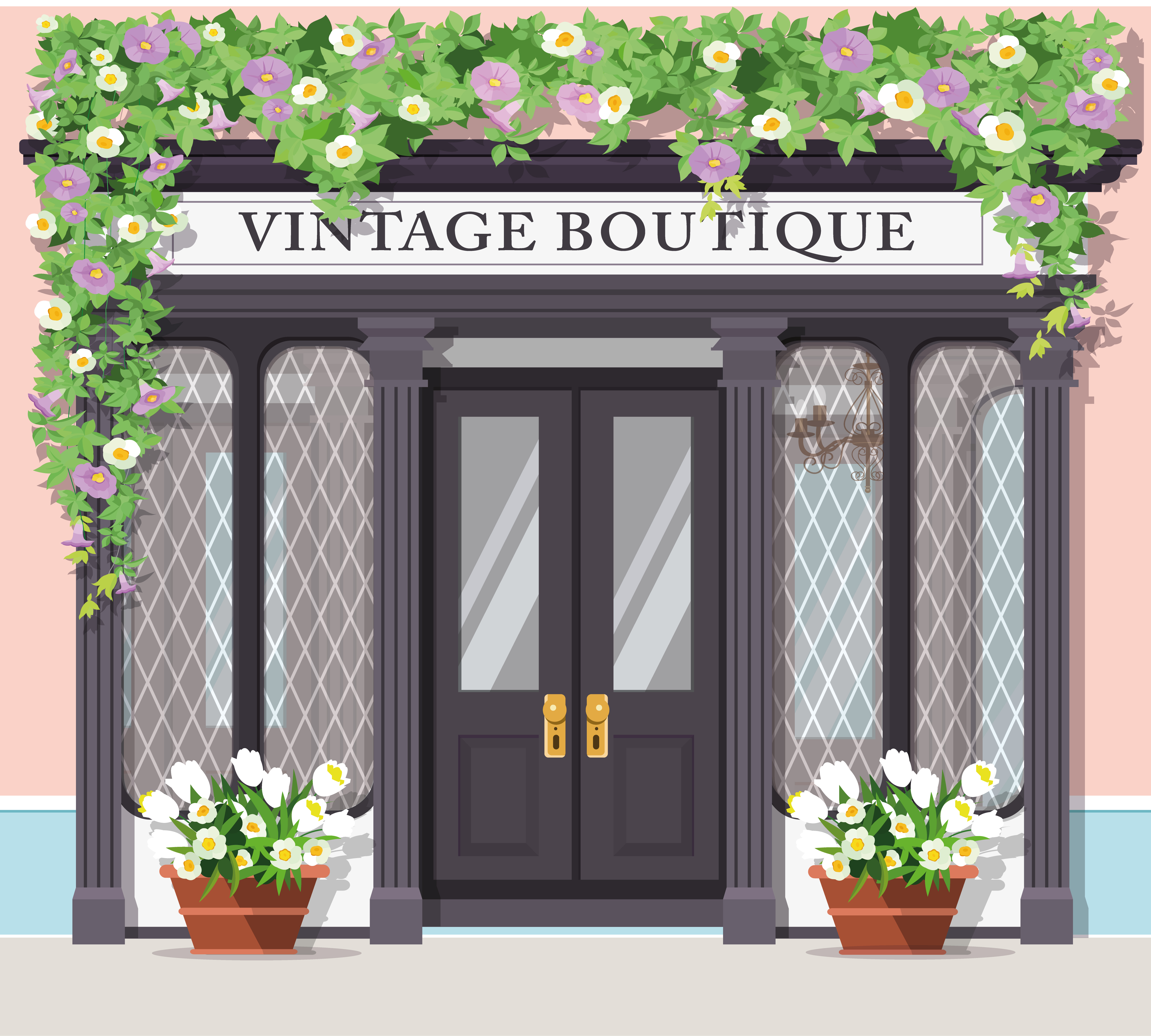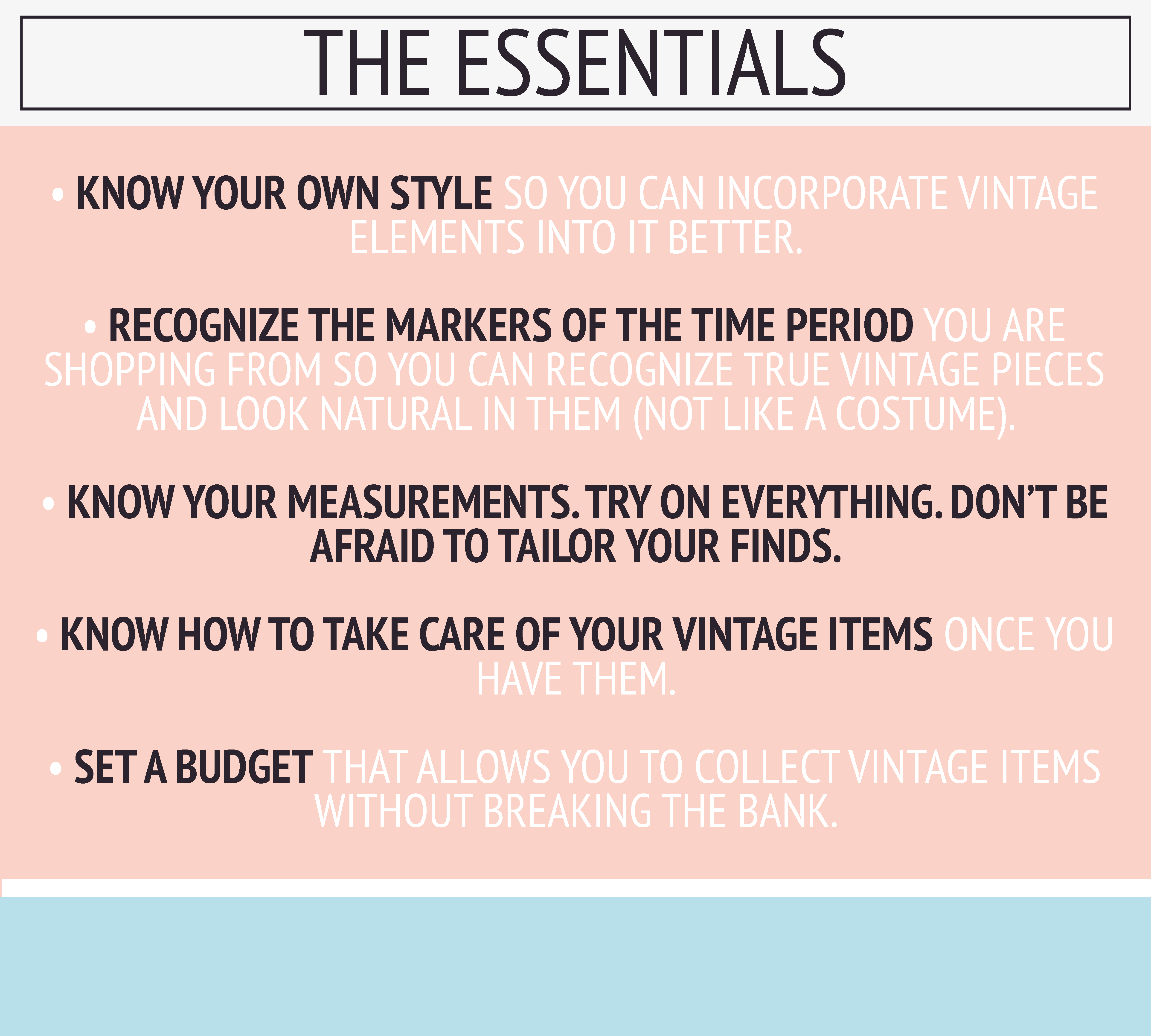 Vintage fashion is becoming more of a must than a hobby. From vintage categories taking over the Etsy homepage to boutiques popping up with vintage treasures and savvy thrifters snagging vintage finds at Goodwill, everyone wants to incorporate yesterday’s fashion into their wardrobe. But, how do you get into vintage shopping? Isn’t it expensive? These are the questions many aspiring fashionistas struggle with, but really, creating a vintage wardrobe isn’t as hard as it seems. You just have to know what you’re looking for.
Vintage fashion is becoming more of a must than a hobby. From vintage categories taking over the Etsy homepage to boutiques popping up with vintage treasures and savvy thrifters snagging vintage finds at Goodwill, everyone wants to incorporate yesterday’s fashion into their wardrobe. But, how do you get into vintage shopping? Isn’t it expensive? These are the questions many aspiring fashionistas struggle with, but really, creating a vintage wardrobe isn’t as hard as it seems. You just have to know what you’re looking for.
Know Your Style
The first thing you have to consider if you want to go vintage, totally or in pieces, is your own style. You don’t want to dive deep into 70s fashion only to find out that you don’t like vests. Make sure that you are looking for vintage pieces that match your personality and how you want to present yourself. If it isn’t a history project and you’re not playing dress up, then you don’t want your vintage finds to look like a costume.
Recognize Markers of Vintage Style
Once you find your style, you’re ready to start shopping, right? Not quite. First, you need to do a little studying. Now, don’t start groaning. You don’t have to learn the entire history of the period you want to shop from, but you do want to learn the markers of that period’s fashion so you can recognize vintage pieces. (And so your “1920s” wardrobe isn’t only flapper dresses.) If you can easily recognize what makes the vintage pieces you’re looking for special, you’ll be able to find them more easily. Remember, vintage clothes aren’t an everyday thrift store find.
View this post on Instagram
Measure, Wear, Tailor
When you start to shop for vintage clothes, you might notice that the sizes don’t make a lot of sense today. Methods of sizing clothes are constantly changing, so you’re going to need to know your measurements to make shopping a little easier. Along with that, you’ll also want to know what kind of things people were wearing under those clothes you’ve fallen in love with. (This is where your studying comes in.) Why? Well, even if you’ve measured yourself and found something that is a perfect fit (because you’re trying everything on, of course), if you don’t have the right undergarments, you’ll have a hard time achieving the silhouette the item is meant to have which is probably what you like so much about it in the first place.
Once you’ve found the perfect item, you know how to wear it, and it’s as close as possible to your size, you still might find that you want to tailor it. That’s fine! There aren’t many of each vintage item available, so the chances of finding something that fits you perfectly as is are slim. You may find something that needs to be completely resized (and you absolutely have to have it), but more than likely you’ll just be adjusting hems and smaller aspects of each piece. You can easily learn to make small alterations like those with a little practice.
Care About Caring for Your Vintage Items
Imagine that you found your ultimate vintage item. You know, that one thing you always obsess over when you look at vintage fashion inspiration on Pinterest. That one. Now that you have it, you’re going to want to wear it. But before you do, there’s one more thing you have to do. Learn how to take care of it. Vintage items are, first and foremost, old, and second, they are made differently than most of our clothes today. Most vintage clothes cannot handle or simply are not meant for the washing machine even on a gentle cycle. Look into how to care for your vintage pieces. For some pieces, this could mean handwashing, hang-drying, and storing them in a specific way. This might seem like a lot at first, but if you are building a wardrobe around these pieces, it will quickly become part of your usual routine.
https://www.instagram.com/p/BnzSnLJlolS/?tagged=vintageclothes
Set a Budget
Now that you’ve styled and studied and measured up, you’re ready to shop! Before you dive into the vintage section of Etsy and eBay or head off to your nearest vintage boutique, you’re going to want to do one more thing. Set a budget. Savvy vintage shoppers can spend lots of money and get incredible deals on vintage fashion, but when you are a new vintage shopper especially, you want to decide carefully how much you are going to spend. Not all vintage fashion is expensive (though lower price items might be a bit harder to find). So, don’t empty your wallet on one or two things in the beginning. Take your time. Developing a vintage wardrobe takes patience.
Let’s review.

Still searching for vintage knowledge? Like anything else, some of the best studying can be done in books. Look for books that explore the fashion from your time period. Other incredible resources for aspiring vintage shoppers include the Vintage Fashion Guild and Melody Fortier’s The Little Guide to Vintage Shopping. Now, what are you waiting for? Dive into the past with your future wardrobe. It’s time to get shopping!













